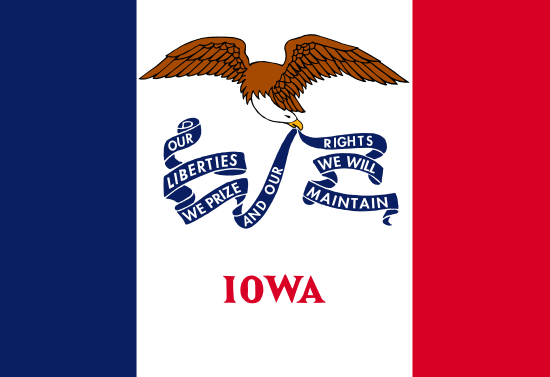
Iowa
- Statehood Year:
- 1846
- Capital:
- Des Moines
- Largest Cities:
- Des Moines, Cedar Rapids, Davenport
- Abbreviation:
- IA
Iowa is a state in the Midwest region of the United States, known for rolling prairies, fertile farmland, and river valleys. It has a population of 3,264,560, making it the 32nd most populated state in the country. The capital city is Des Moines. Iowa has a agricultural giant with renewable energy development.